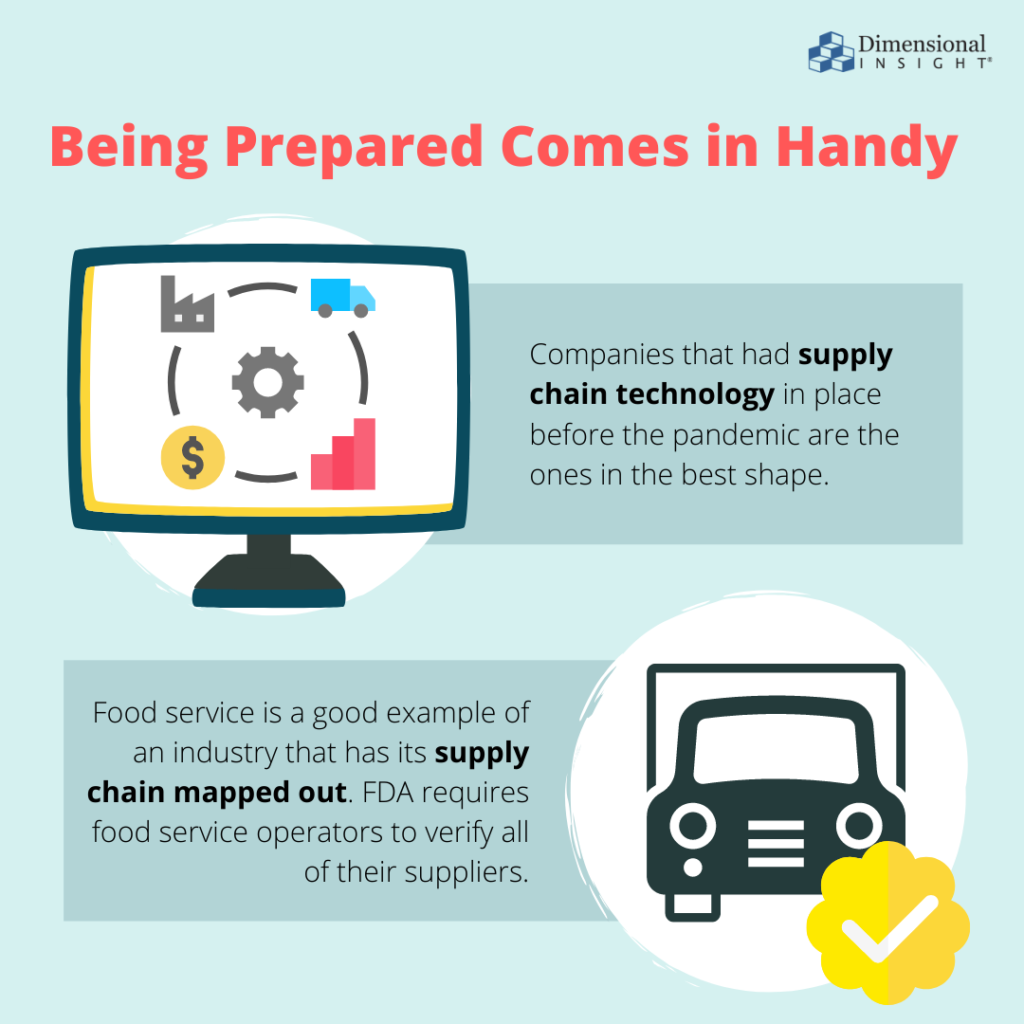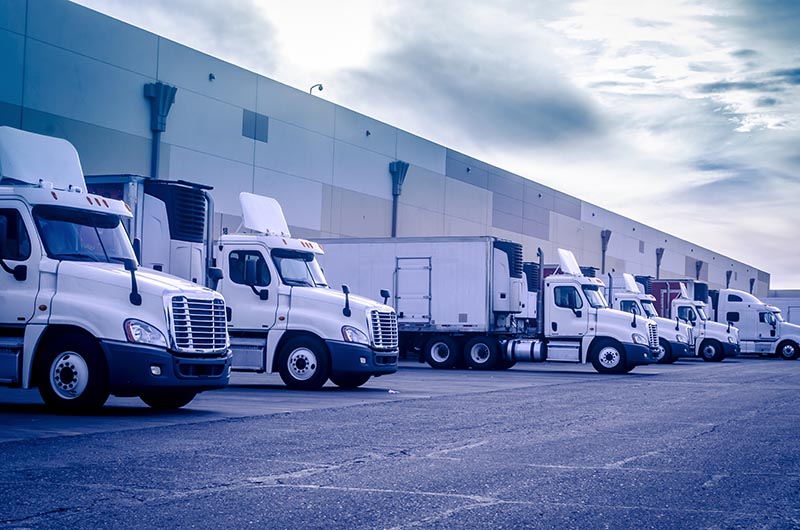In the best of times, a disruption to the supply chain can cost an organization valuable time and money. In the current climate, the repercussions are not only clear to the organization, but also to people who may have never heard the term “supply chain” before.
The sight of empty shelves where common items like toilet paper are usually stocked, or news video showing a shortage of medical supplies makes everyone aware of what is and what is not available because of the COVID-19 pandemic. Some companies took steps after previous supply chain disruptions to prepare themselves for a situation like this. Others were not so prescient. Here’s a look at both sides of that coin, and how everyone can prepare themselves for the next major disruption.
The ideal position
Companies that had supply chain technology in place before the pandemic are the ones in the best shape. The data would have allowed them to know right away which facilities or other organizations would be affected and how that would impact their products. While possible competitors without that data would have been scrambling just to find out what they would need to act on, the companies with the data would already be at work securing the materials they knew they would be missing.
Food service is a good example of an industry that has its supply chain mapped out, primarily for safety reasons. In order to ensure quality and safety, the U.S. Food and Drug Administration requires food service operators to verify all of their suppliers. This has allowed businesses like convenience stores to reallocate certain products to avoid overstocking and to evenly distribute their products.
What many organizations are facing
 Many companies, though, do not have a detailed understanding of their supply chain, either in terms of the steps involved to get a product to its final destination, or where their supply chain originates. It can be expensive and labor-intensive work, and many companies just haven’t taken the time or spent the money to figure out all of the details.
Many companies, though, do not have a detailed understanding of their supply chain, either in terms of the steps involved to get a product to its final destination, or where their supply chain originates. It can be expensive and labor-intensive work, and many companies just haven’t taken the time or spent the money to figure out all of the details.
As a result, they might have expected a problem when certain elements of the supply chain shut down, but they might not have had a clear idea of when those problems would arise. (Was it a site in China, for example, that would have been shut down when that country started to go into lockdown? Or was it somewhere along the shipping line? Or did the problems not occur until the United States started shutting down its businesses?)
Even if they can’t map their supply chain information, many companies are capable of assessing their inventory. That data can give an organization an idea of what they can go ahead with while they try to figure out how much of a disruption they are facing and where they can try to make up for that gap.

What’s next
The ideal supply chain map gives an organization all of the information right down to the source of raw materials. But not every company needs to dig that deep. There is supply chain software that can provide data such as the suppliers of the top five products by revenue, the functions of a primary site, and alternate sites that are able to do the same thing. Other information, such as how long it would take to move operations to an alternate site, are important for situations where the primary site is out of commission.
For some companies, though, it’s too late to put advanced supply chain data to work for them in overcoming the economic problems caused by the pandemic. The most important data for them – as well as most of the world – is the number of people affected by the virus. And when their supply chain is once again intact, then it is time to put the effort into mapping that supply chain so they’re prepared the next time a disaster strikes.
- What Data Can Bring to California’s Investment in its Ports - July 25, 2024
- Unlocking the Power of Data in the Utilities Industry - July 18, 2024
- How Analytics Can Help Your Wholesale Nursery Grow - July 17, 2024



